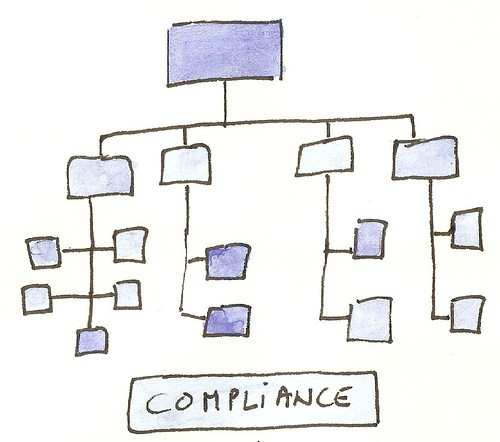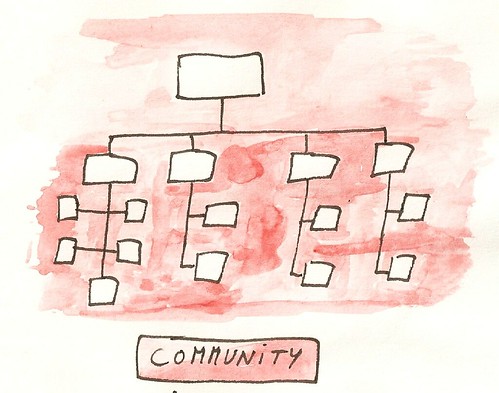We cannot achieve commitment in an organization by using either compliance or community. We need both.
Last year I argued that we have the tendency to ignore the invisible parts of an organization chart when we talk about the results. That’s because we are blinded by its boxes and reporting lines. That’s OK, because they are somewhat intimidating.
It’s called compliance and it gives us control, certainty, goal-setting and measurability. It is expressed in terms of hierarchical positions, divisions, departments, sections, positions and rewards.
Compliance runs on authority.

Unfortunately we are missing an important part of what makes organizations tick: the air between the boxes and the reporting lines. Make no mistake about it. Whenever an organization achieves something, it’s because the air between the boxes and the reporting lines is going full throttle.
This part is called community and it delivers us trust, relationship and belonging. It is expressed in terms of roles, projects, teams, tribes, groups and clubs.
Community runs on influence.

However, let’s not jump to conclusions and shout that we should get rid of compliance and hierarchy. We need both, like the human body needs the structure of a skeleton and the flexibility of the muscles to move.
The thing we are after in organizations during organizational change management projects is commitment. This can only be achieved when we balance compliance and community. And there’s a name for that as well: Social Architecture.

